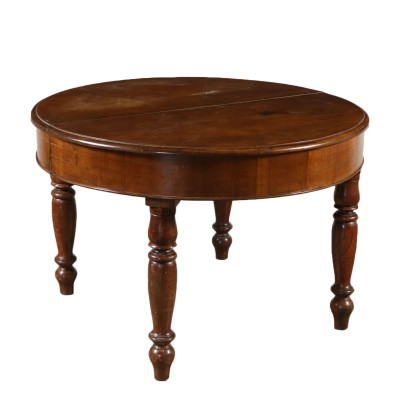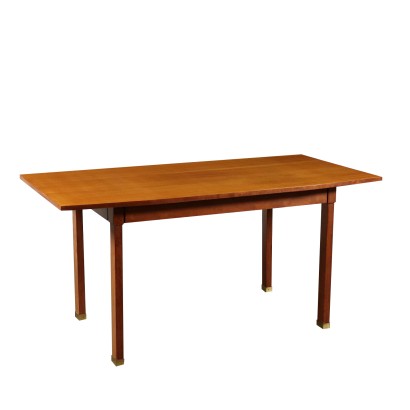Walnut and Elm Extansible Table Italy Second Quarter 19th Century
Features
Age: 19th Century / 1801 - 1900
Origin: Italy
Description
A table hold by turned legs with openable and extensible top. Four extensions are included. Italy, second quarter of 19th Century.
Product Condition:
Fair condition. Wear consistent with age and use.
Dimensions (cm):
Height: 80
Width: 118,5
Depth: 120
Maximum size (cm):
Width: 238,5
Additional Information
Age: 19th Century / 1801 - 1900
19th Century / 1801 - 1900Main essence:
Walnut
Walnut wood comes from the plant whose botanical name is juglans regia , probably originally from the East but very common in Europe. Light or dark brown in color, it is a hard wood with a beautiful grain, widely used in antique furniture. It was the main essence in Italy throughout the Renaissance and later had a good diffusion in Europe, especially in England, until the advent of mahogany. It was used for solid wood furniture and sometimes carvings and inlays, its only big limitation is that it suffers a lot from woodworm. In France it was widely used more than anything else in the provinces. In the second half of the eighteenth century its use decreased significantly because mahogany and other exotic woods were preferred.Elm
Very hard and compact wood, which comes from ulmus campestris . It is distinguished by its reddish brown color. It was mainly used for rustic furniture in France, Holland and Scandinavia. In England, however, it was also used a lot in inlay work. Alternative proposals

























